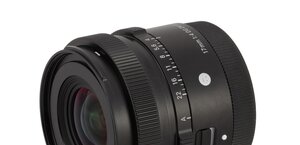Sigma C 28-70 mm f/2.8 DG DN
11. Summary
Pros:
- solid but compact barrel,
- very good image quality in the frame centre across the whole focal range,
- good image quality on the edge of the APS-C/DX sensor,
- slight longitudinal chromatic aberration,
- very low lateral chromatic aberration,
- low astigmatism,
- slight vignetting on the APS-C sensor,
- sensible performance against bright light,
- silent, quick, and accurate autofocus,
- slight focus breathing,
- sensible out-of-focus areas.
Cons:
- very high vignetting on full frame,
- distinct distortion on both ends of the focal range.
Please Support UsIf you enjoy our reviews and articles, and you want us to continue our work please, support our website by donating through PayPal. The funds are going to be used for paying our editorial team, renting servers, and equipping our testing studio; only that way we will be able to continue providing you interesting content for free. |
- - - - - - - - - - - - - - - - - - - - - - - - - - - - - - - - - - - - - - - - - - - - - - - -
Of course we have to compare the tested Sigma to the rival Tamron 28-75 mm f/2.8 Di III VXD G2. The price of the Tamron is a $100 higher as the price of the Sigma and it can offer you a bit better image quality, perhaps apart from chromatic aberration, a category where the Sigma prevails. Of course the Tamron is also heavier, bigger, and it makes an impression of an instrument that is not so solid and not so well weather-sealed. As you see every of these two lenses offers you something unique important, their competition is very intense. Of course from the perspective of customers it is a very good situation and we should be very pleased – let me finish this test with such an optimistic remark.






